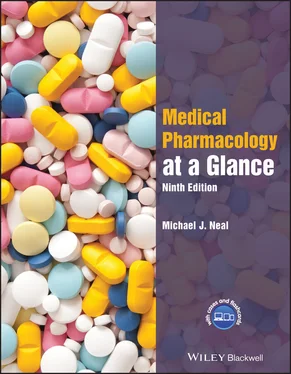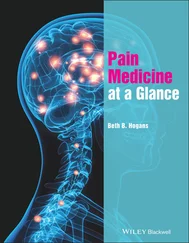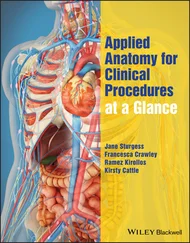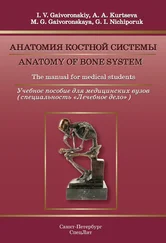The processes of the ciliary body are highly vascularized and are the sites of aqueous humour formation. The ciliary epithelial cells, which contain adenosine triphosphatase (ATPase) and carbonic anhydrase, absorb Na +selectively from the stroma and transport it into the intercellular clefts, which open only on the aqueous humour side. The hyperosmolality in the clefts causes water flow from the stroma, producing a continuous flow of aqueous.
The aqueous humour circulates through the pupil and is drained into the canal of Schlemm, which is a circular gutter within the surface of the sclera at the limbus. The sieve‐like trabecular meshwork is the roof of the gutter, through which the aqueous must pass before it is eventually drained away into the episcleral veins. Some aqueous drains pass through the uveoscleral pathway.
Glaucoma occurs in about 1% of people over 40 years of age. Viewed through an ophthalmoscope, the optic disc appears depressed (cupping) because of the loss of nerve fibres. The mechanism by which the nerve fibres are destroyed in glaucoma is unclear, but may involve mechanical factors and/or local ischaemia. Open‐angle (chronic simple) glaucoma is the most common form of the disease. At present, lowering the IOP is the only treatment for open‐angle glaucoma. Generally, the aim is to use topical drugs or, if they fail, surgery to reduce the IOP by 20–50% of the initial pressure.
In closed‐angle glaucoma, the angle between the cornea and the iris is abnormally small. Occasionally, the angle closes completely, preventing aqueous outflow, and the IOP quickly rises. Because permanent damage to the retina can occur during these attacks, the pressure must be reduced as quickly as possible by intensive instillation of pilocarpine eyedrops combined, if necessary, with intravenous acetazolamide and intravenous hypertonic mannitol (an osmotic agent) to remove water.
Drugs that reduce IOP by increasing outflow
Latanoprostis a prodrug of prostaglandin F 2(PGF 2) that passes through the cornea and reduces the IOP by increasing the uveoscleral outflow of aqueous. The mechanism is thought to involve the activation of matrix metalloproteinases, leading to a reduction in outflow resistance. Latanoprost is very effective and has reduced the number of patients requiring surgery. It has minimal systemic side‐effects and is widely used.
Pilocarpinereduces the IOP by contracting the ciliary muscle. This pulls the scleral spur and results in the trabecular meshwork being stretched and separated. The fluid pathways are opened up and aqueous outflow is increased. All parasympathomimetics cause miosis, resulting in poor night vision and complaints of ‘dimming of vision’. Ciliary muscle spasm that increases nearsightedness cause blurred vision. Pilocarpine is used mainly for closed‐angle glaucoma.
Drugs that reduce IOP by decreasing aqueous secretion
β‐Blockers, e.g. timolol, block β 2‐adrenoceptors on the ciliary processes and so reduce aqueous secretion. In addition, they may block β‐receptors in the afferent blood vessels supplying the ciliary processes. The resulting vasoconstriction produces reduced ultrafiltration and aqueous formation. Drugs given as eyedrops can be absorbed through the nasal mucosa and produce systemic effects. Thus, β‐blockers may provoke bronchospasm in asthmatics or bradycardia in susceptible patients. Therefore, β‐blockers (even selective β 1‐antagonists) should be avoided in patients with asthma, heart failure, heart block or bradycardia.
Brimonidineand apraclonidineare α 2‐adrenoceptor agonists. They decrease aqueous formation by stimulating α 2‐receptors on the adrenergic nerve terminals innervating the ciliary body (thus reducing norepinephrine release).
Carbonic anhydrase inhibitors. Acetazolamideacts on the ciliary body and prevents bicarbonate synthesis. This leads to a fall in sodium transport and aqueous formation because bicarbonate and sodium transport are linked ( Chapter 14). Acetazolamide is given orally or intravenously, but is too toxic for long‐term use. Dorzolamideis a topically active inhibitor of carbonic anhydrase (CA‐2). It can be used alone in patients in whom β‐blockers are contraindicated. It is a sulphonamide and systemic side‐effects may occur, e.g. skin rashes, bronchospasm.
Laser trabecular surgerymay be used as an alternative to drugs in glaucoma. Under local anaesthesia, the surgeon uses an argon or diode laser to place about 100 evenly spaced lesions on the inner surface of the trabecular meshwork. The laser ‘burns’ cause localized shrinkage, which exerts tension on the adjacent, untreated tissue, opening spaces in the meshwork and allowing increased aqueous drainage. In closed‐angle glaucoma, an yttrium aluminium garnet (YAG) laser may be used to make a hole at the periphery of the iris. This prevents the forward movement of the iris that precipitates acute glaucoma and is usually caused by a partial block of aqueous flow through the pupil.
Mydriasis (dilatation of the pupil) is required for ophthalmoscopy. The drops most commonly used are the relatively short‐acting antimuscarinics tropicamideand cyclopentolate, which produce both mydriasis and cycloplegia. The α‐adrenoceptor stimulant phenylephrinemay be used to produce mydriasis without affecting the pupillary light reflex or accommodation. Mydriasis may precipitate acute closed‐angle glaucoma in susceptible patients who are usually aged over 60 years.
Age‐related macular degeneration
AMDaffects older people and is the most common cause of blindness in the UK. In most patients, central retinal cells slowly deteriorate, but in 10% of patients, new fragile blood vessels form under the retina and leak fluid and blood. In this neovascular (wet) form of AMD, loss of vision can occur in a few months. The first treatment for wet AMD was photodynamic therapy in which verteporfin, a light‐sensitive dye, is given intravenously and is taken up by the vascular endothelium. A laser is then applied to the lesion and this activates the dye, releasing toxic‐free radicals that destroy the new vessels (photodynamic therapy). More recently, neovascular AMD has been treated with the intravitreal injection of ranibizumab, pegaptaniband bevacizumab. These newer drugs are antibodies that bind to and inhibit VEGF in the retina, slowing the progression of AMD.
Конец ознакомительного фрагмента.
Текст предоставлен ООО «ЛитРес».
Прочитайте эту книгу целиком, на ЛитРес.
Безопасно оплатить книгу можно банковской картой Visa, MasterCard, Maestro, со счета мобильного телефона, с платежного терминала, в салоне МТС или Связной, через PayPal, WebMoney, Яндекс.Деньги, QIWI Кошелек, бонусными картами или другим удобным Вам способом.












